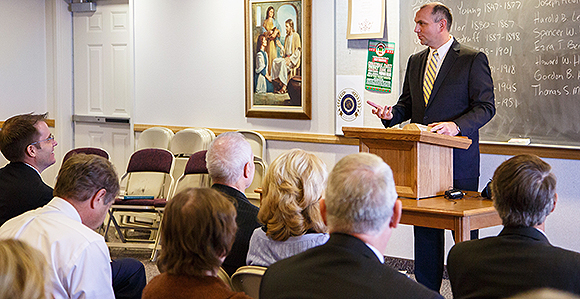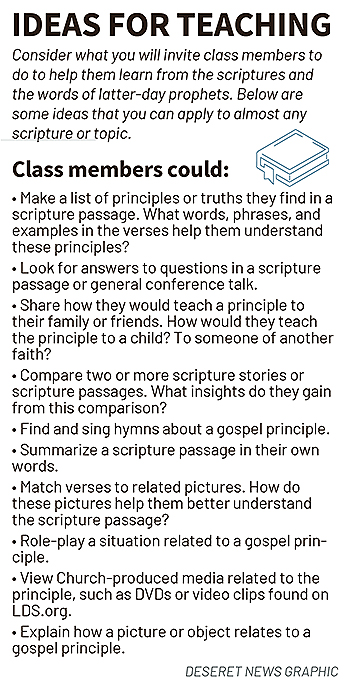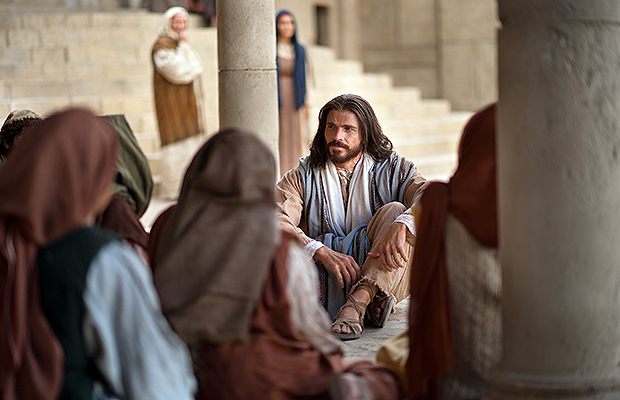In Striving to Be a Christlike Teacher, Being a Moderator Is Not Enough
Contributed By Brian K. Ashton, Sunday School General Presidency

We should be striving to teach as the Savior did, which means helping students be taught by the Holy Ghost and come to know God using the best teaching methods and resources available for that purpose.
Article Highlights
- Focus on the needs of students.
- Connect them with heaven through the Holy Ghost.
- Use a variety of teaching methods and resources that will best accomplish these purposes.
“We should be striving to teach as the Savior did, which means helping students be taught by the Holy Ghost and come to know God using the best teaching methods and resources available for that purpose.” —Brian K. Ashton, Sunday School General Presidency
The Savior, who was the Master Teacher, always used the teaching style most appropriate for His audience, and a brief search through the scriptures shows that Jesus used many different teaching methods. Among the various tools Christ used were the scriptures, parables, inspired questions, discussion, logic, object lessons, analogies, preaching, silence, repetition, prophecy, experience, observation, and testimony.
Jesus even asked His students to prepare before coming to “class” (see 3 Nephi 17:1–3).
The Savior’s purpose was always to connect His hearers to the Holy Ghost and bring them to His Father. Christlike teachers also use a variety of teaching methods and resources—the ones that are best suited for their students with the intent to bring their learners unto God and have them be taught by the Spirit.
Sometimes, however, teachers focus on just one teaching method, which can hinder learning and may limit the Holy Ghost’s ability to reach the students. For example, in the past many teachers focused on preaching or lecturing as their primary teaching methodology. Since the introduction of the Come, Follow Me curriculum, far more emphasis has been put on discussion. Both are important teaching styles. However, in and of themselves, neither is adequate alone to meet the needs of our students and to teach like the Savior.

Brother Brian K. Ashton, Second Counselor in the Sunday School General Presidency.

Consider what you will invite class members to do to help them learn from the scriptures and the words of latter-day prophets. Above are some ideas that you can apply to almost any scripture or topic. Image by Aaron Thorup.
Teachers who strive to emulate the Savior use a variety of teaching methods in order to meet the needs of their students. I recently attended a Gospel Doctrine class where the teacher did this very well. The lesson was on the book of Ruth in the Old Testament. The teacher, Sister Melanie Westcott, set up a beautiful painting at the front of the class that depicted several scenes from the life of Ruth. This painting had been created by a class member, Sister Sallie Poet. After introducing the book of Ruth, Sister Westcott had Sister Poet explain her painting. What was most interesting to me were the analogies to the Savior and the temple that Sister Poet had identified in the book of Ruth and had incorporated into her painting. Our brief discussion of the painting was a wonderful way to identify key lessons from the book of Ruth and get us thinking about how Ruth’s story related to us.
Sister Westcott then got us directly into the scriptures. We read together a few of the most important verses, identified the symbolism found in those verses, and discussed what the symbolism meant and how the associated lessons applied in our own lives. We discussed how the story of Ruth teaches us what is most important in our mortal journey and how following Ruth’s example can help us be redeemed by Jesus Christ in much the same way that Ruth and her family were redeemed by Boaz. Sister Westcott encouraged our comments and waited patiently, after asking inspired questions, for the Holy Ghost to teach us. As a result, when students finally raised their hands, they had profound answers that were edifying to all.
Although I didn’t make many comments in the class, I noticed that the Spirit was continually teaching me and helping me make connections to other things in the scriptures and to my daily life. I wrote myself several notes about things that I learned and need to do differently.
Sister Westcott connected us with heaven through her preparation and teaching methods. I left the class pondering the things that the Spirit had taught me and feeling a greater closeness to Heavenly Father and Jesus Christ. After thinking about the lesson for several days, I found it interesting that with all that Sister Westcott taught, my focus had not been on her or the wonderful lesson she had taught—rather it was on the Savior.
With the increased focus on inspired questions and discussions over the past few years, some teachers have almost exclusively used discussion as their sole teaching method. What’s more, the term “teacher” has sometimes been replaced by “facilitator,” “moderator,” or “discussion leader.” While discussion is one essential teaching method (see Doctrine and Covenants 88:122), the terms “facilitator,” “moderator,” or “discussion leader” do not appropriately describe the complete role of a Christlike teacher. We should be striving to teach as the Savior did, which means helping students be taught by the Holy Ghost and come to know God using the best teaching methods and resources available for that purpose.
As the Sunday School General Presidency, we invite teachers to focus on the needs of students, connect them with heaven through the Holy Ghost, and use the teaching methods that will best accomplish these purposes. We also invite each of us to use the scriptural term “teacher” for those who teach our gospel classes. May each of us strive to teach like Jesus Christ—the Master Teacher.

An image from the Church’s Bible video series depicts Christ teaching a group of people.
